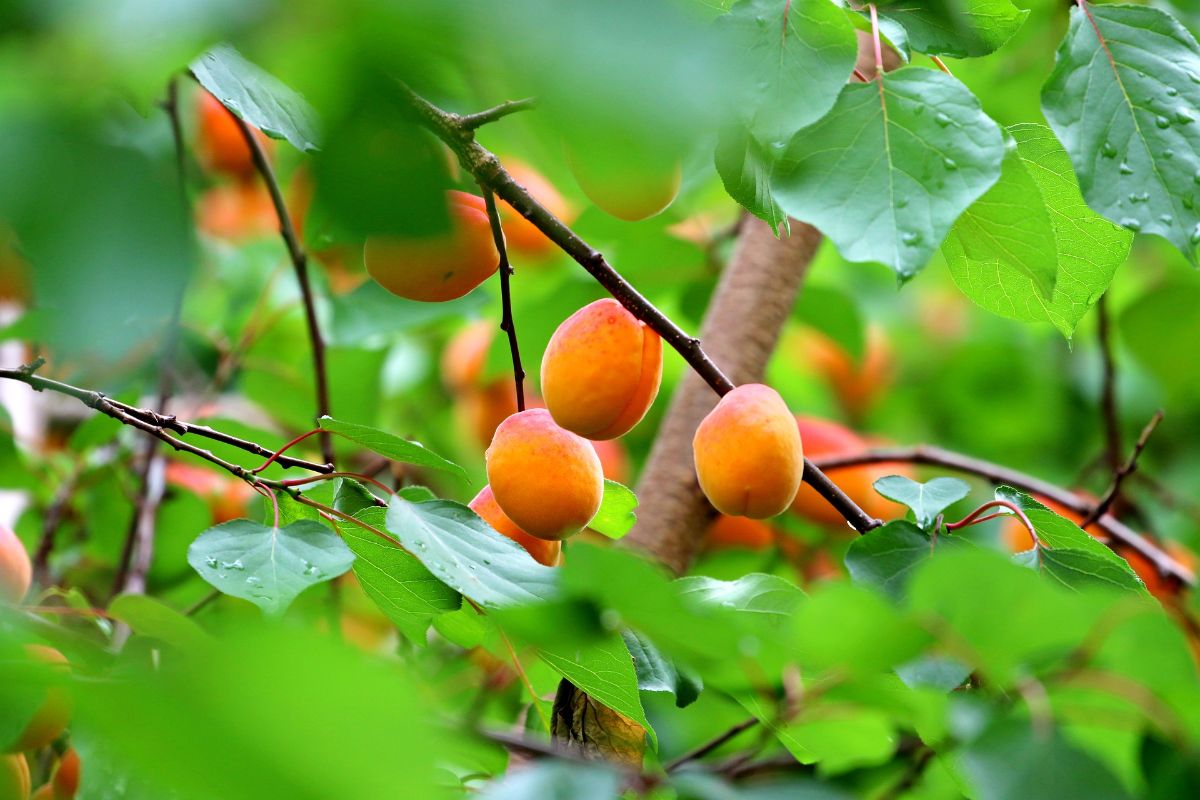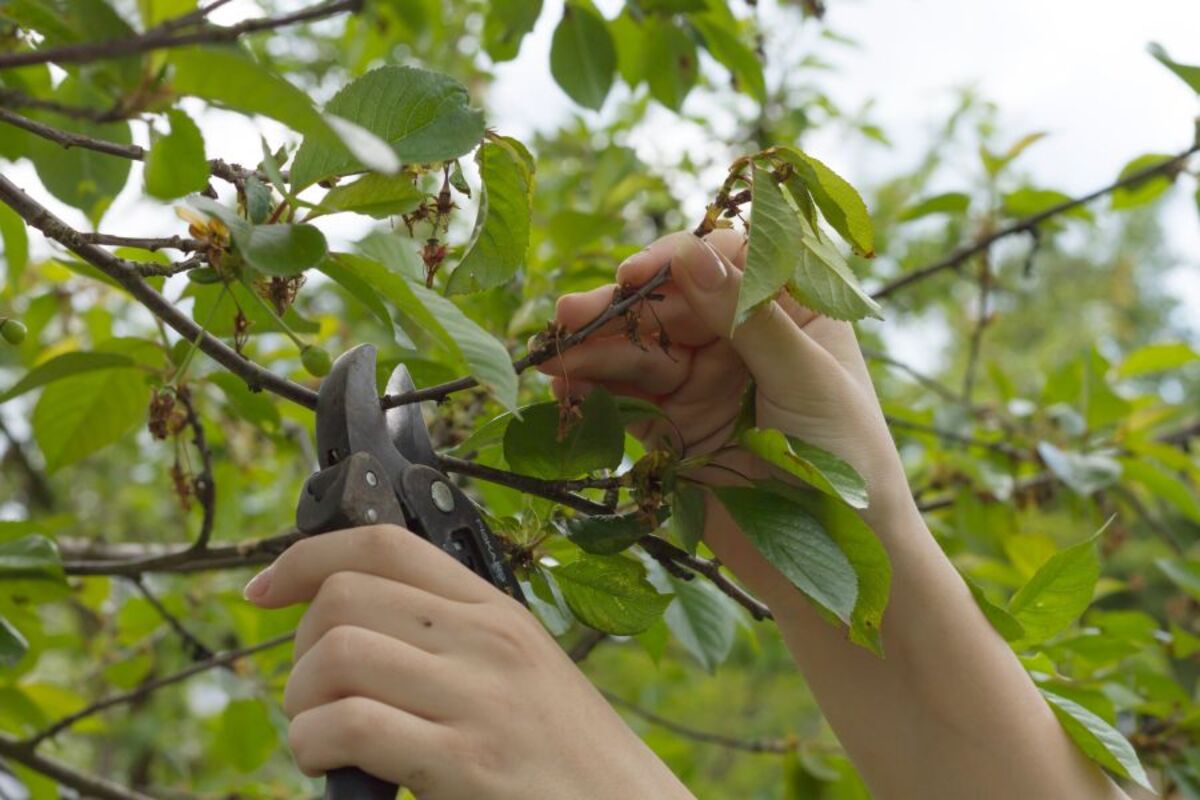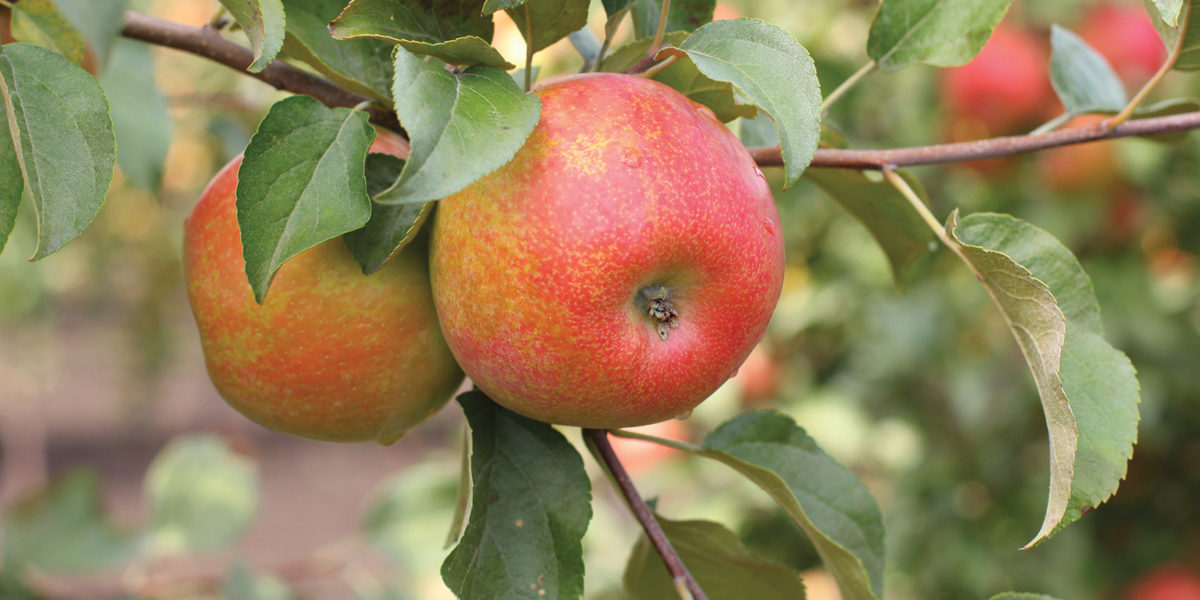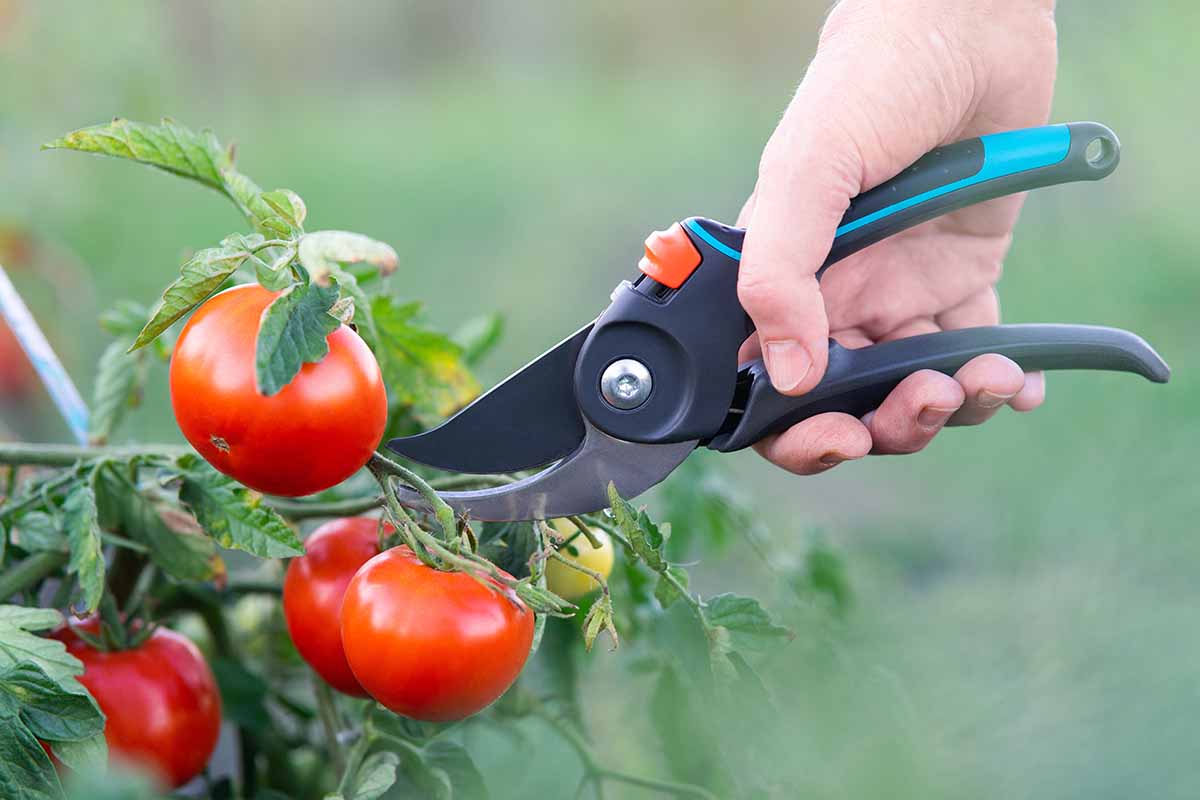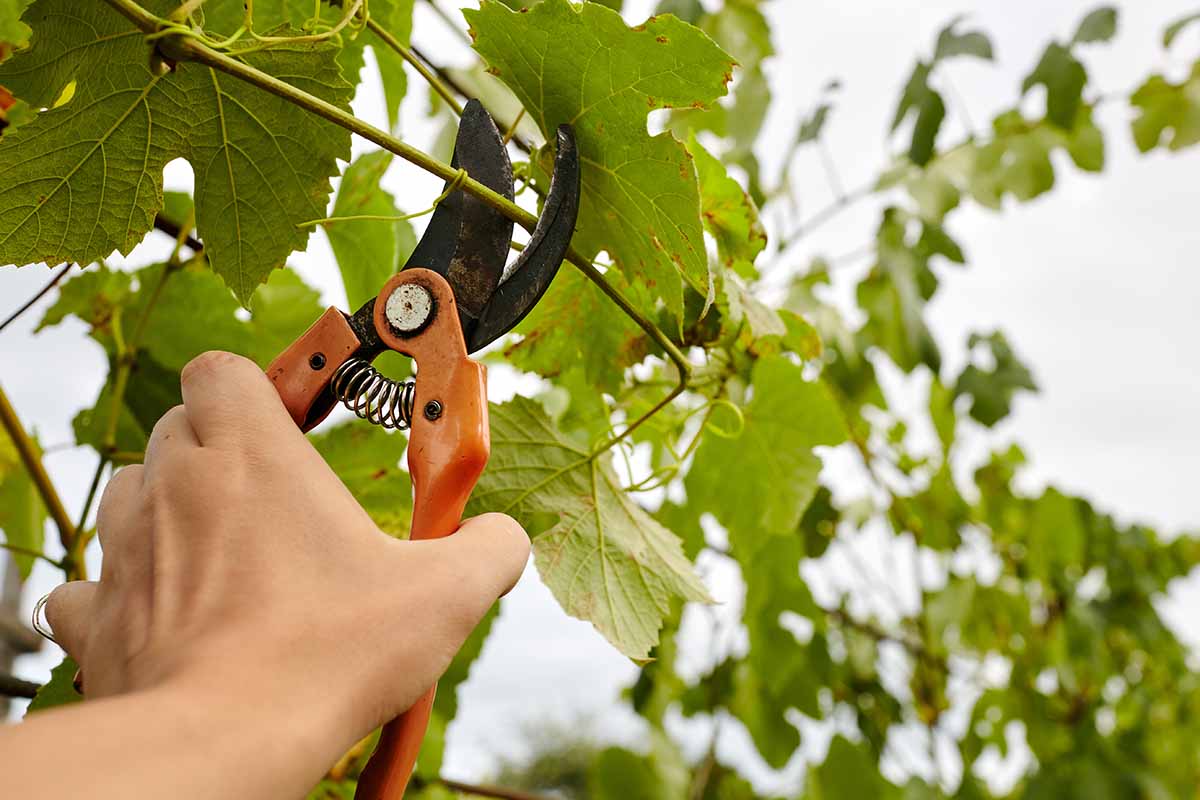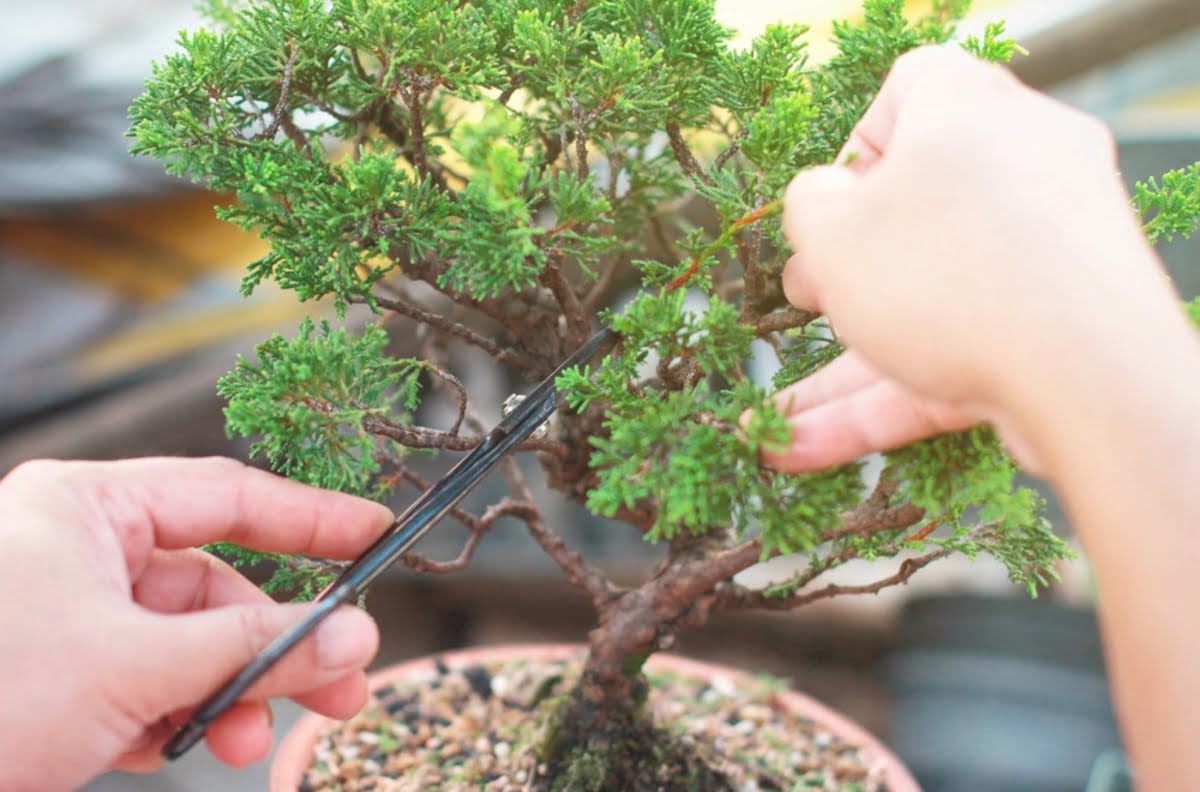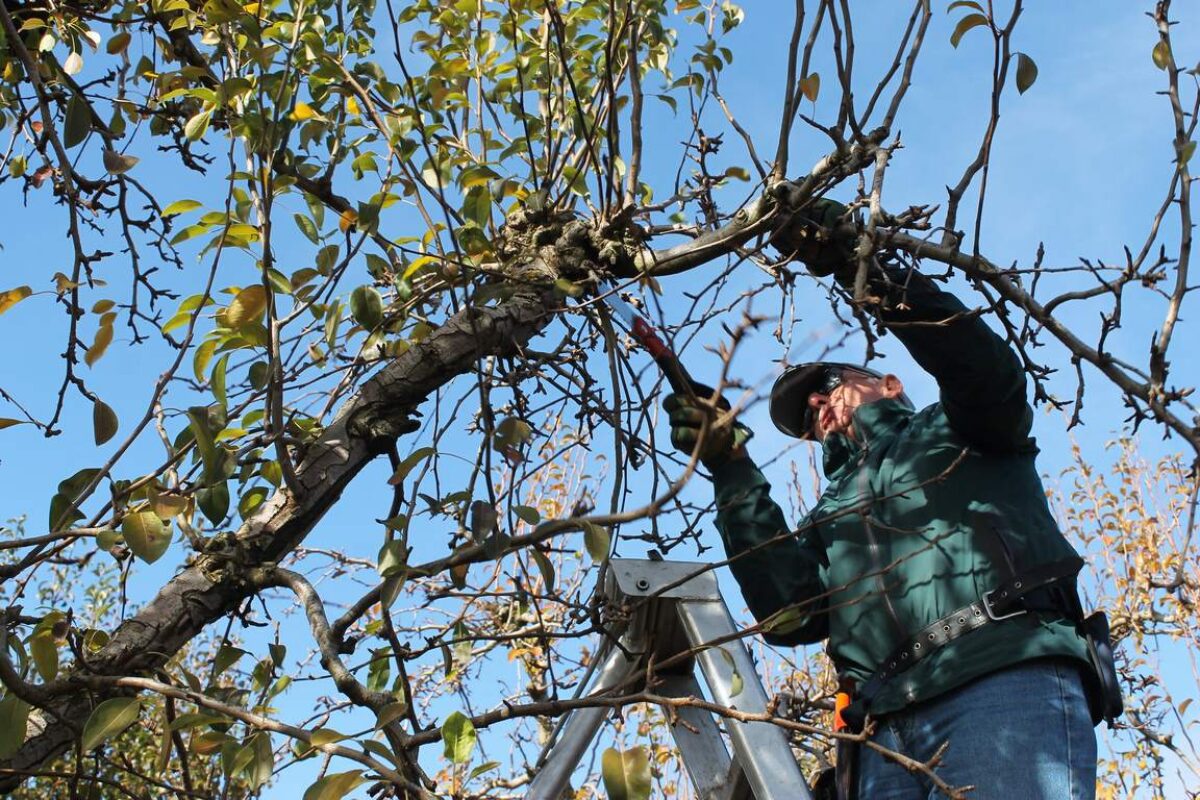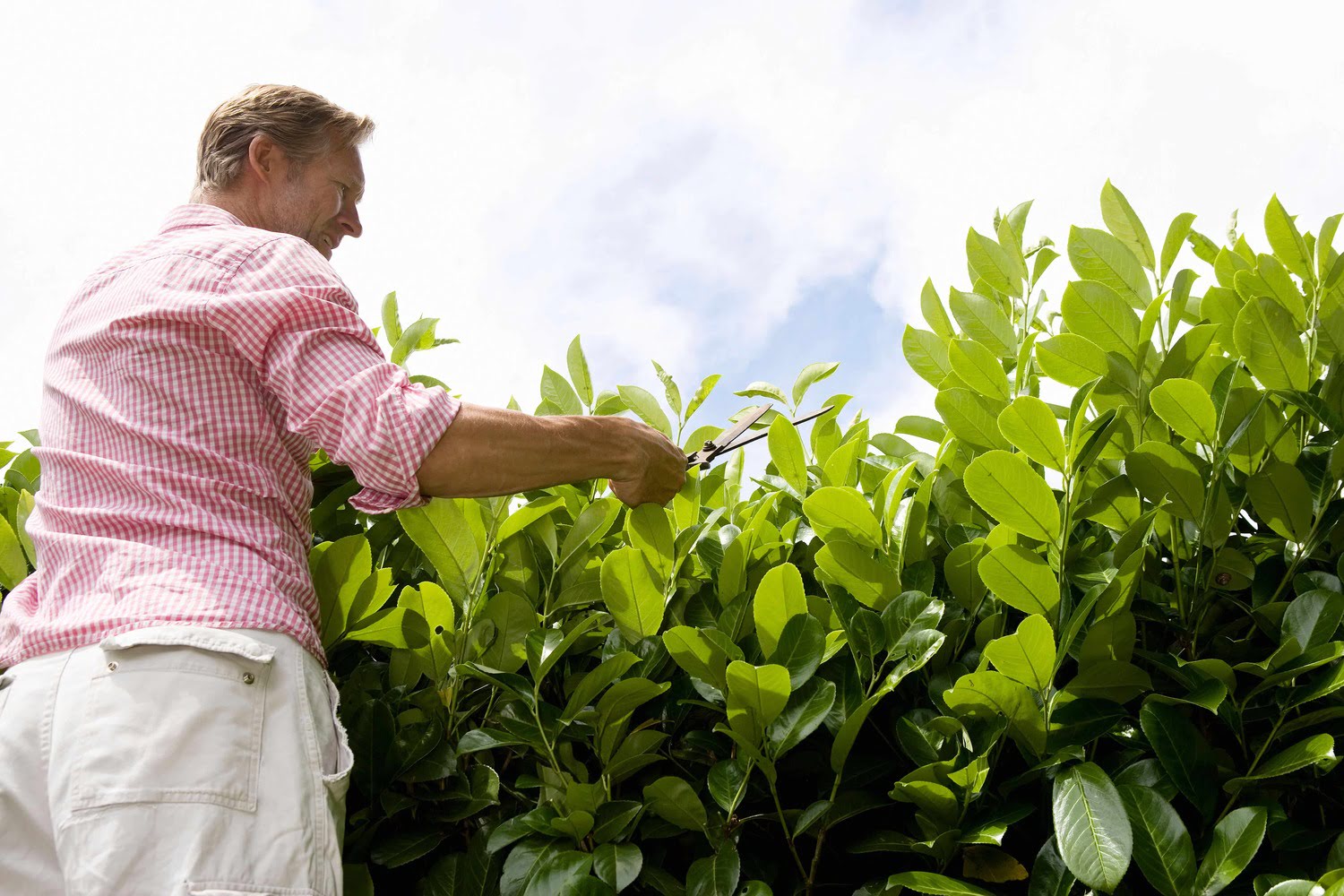Home>Gardening Techniques>Plant Care>When To Prune Seedlings
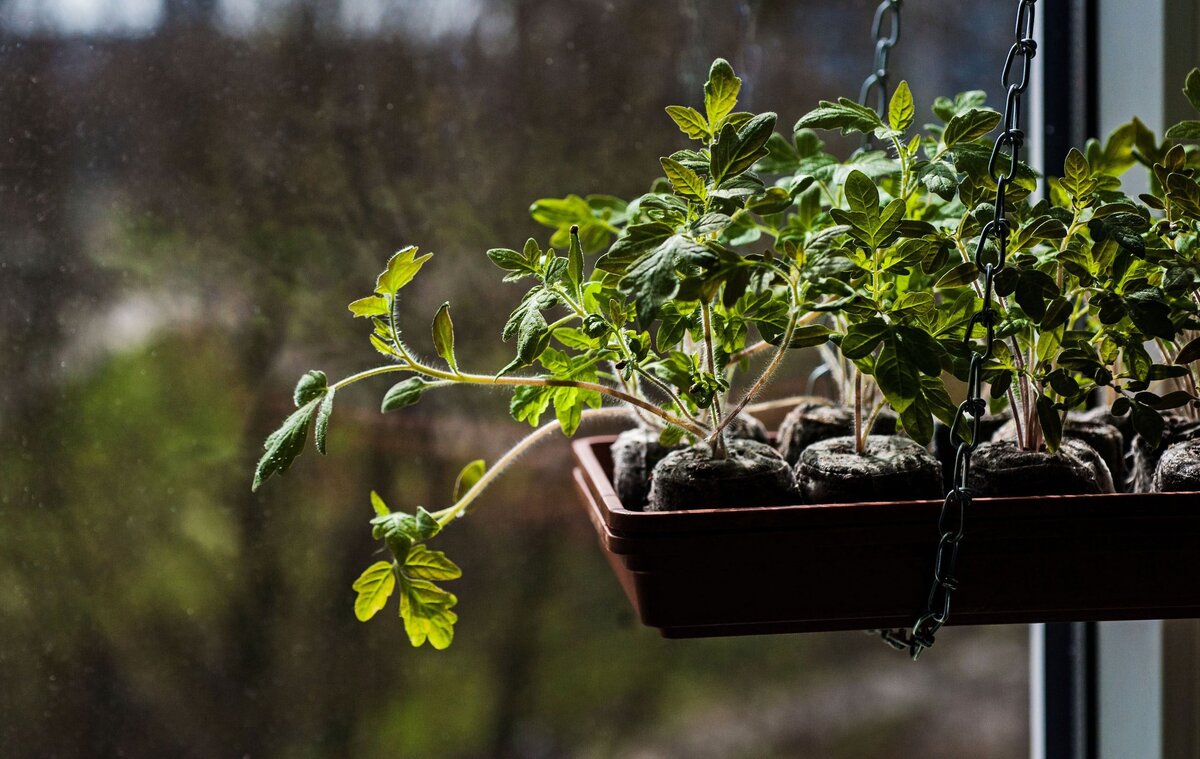

Plant Care
When To Prune Seedlings
Published: January 3, 2024
Learn the best time to prune seedlings for optimal plant care. Discover expert tips and techniques for successful seedling pruning.
(Many of the links in this article redirect to a specific reviewed product. Your purchase of these products through affiliate links helps to generate commission for Chicagolandgardening.com, at no extra cost. Learn more)
Table of Contents
Introduction
Pruning is an essential practice in plant care that involves selectively removing certain parts of a plant, such as branches, leaves, or buds. While pruning is commonly associated with mature plants, it is equally important to prune seedlings to promote healthy growth and shape them into thriving plants. In this article, we will explore the art of pruning seedlings and discuss when it is the right time to prune them.
Pruning seedlings is a crucial step in their development as it helps establish a strong and well-structured foundation. By removing excess growth and encouraging outward growth, pruning allows seedlings to focus their energy on developing sturdy stems and root systems. Furthermore, it helps shape the seedlings into desirable forms, ensuring they grow into attractive and productive plants.
The benefits of pruning seedlings are numerous. Firstly, it helps prevent overcrowding and improves air circulation, reducing the risk of diseases and pests. By removing competing branches, seedlings are able to receive optimal sunlight, promoting photosynthesis and overall growth.
Additionally, pruning seedlings stimulates branching and bud production, leading to bushier and fuller plants. This is especially beneficial for certain plant varieties that require dense foliage for better fruit or flower production. Pruning also helps maintain the desired size and shape of the plants, making them more aesthetically pleasing in gardens or indoor spaces.
Before embarking on pruning seedlings, there are several factors that need to be taken into consideration. The type of plant, its growth habit, and the desired outcome should all be assessed to determine the appropriate pruning techniques and timing. Each plant species has different requirements, and understanding these nuances will ensure successful pruning.
Timing plays a crucial role in seedling pruning. Pruning at the right time ensures minimal stress on the plants and maximizes their ability to recover and grow. Pruning too early or too late can hinder the seedlings’ development and may even result in stunted growth or damage. By understanding the growth cycles and requirements of specific plants, gardeners can make informed decisions regarding pruning.
In the following sections, we will delve deeper into the best practices for pruning seedlings, including when to prune, techniques to employ, and common mistakes to avoid. By mastering the art of pruning seedlings, you will be equipped to nurture and shape your plants, encouraging robust growth and beautiful foliage or flowers.
Understanding Seedling Pruning
Seedling pruning refers to the selective removal of specific parts of a young plant, usually done to shape its growth and encourage proper development. Unlike pruning mature plants, seedling pruning focuses on establishing a strong foundation for the plant’s future growth. By removing unnecessary or weak branches, seedling pruning allows the plant to channel its energy towards essential areas, such as root development and sturdy stem growth.
The primary goal of seedling pruning is to ensure that the plant grows in the desired form and structure. By removing competing branches or excessive growth, seedlings are guided to develop a balanced and aesthetically pleasing framework. This early shaping is crucial, as it sets the stage for the plant’s future growth and productivity.
In addition to shaping, seedling pruning also helps improve air circulation and prevent overcrowding. By removing densely growing branches, the plant receives adequate air movement, reducing the risk of diseases and pests. Proper air circulation is essential for a plant’s overall health and vigor, preventing the development of fungal pathogens and ensuring efficient photosynthesis.
Another key benefit of seedling pruning is the stimulation of branching and bud production. By strategically removing specific branches or tips, the growth hormones within the plant are redirected, leading to increased lateral branching. This results in a denser and fuller plant structure, which is highly desirable for certain plant varieties, especially those that bear fruits or flowers.
It is worth noting that seedling pruning is not a one-size-fits-all approach. Different plant species have varying growth habits and requirements. Some plants naturally have a bushy growth pattern and may require minimal pruning, while others benefit from more extensive pruning to achieve the desired shape and structure.
Additionally, the timing of seedling pruning is critical. It is important to wait until the seedling has established a strong root system and is actively growing before initiating any pruning efforts. Pruning too early can inhibit the seedling’s growth, while pruning too late may lead to unnecessary stress and recovery time for the plant.
In the next sections, we will explore the factors to consider before pruning seedlings, as well as the right time and techniques for effective pruning. By understanding the importance and principles of seedling pruning, you will be able to provide the best care for your young plants and set them on a path towards healthy and vigorous growth.
Benefits of Pruning Seedlings
Pruning seedlings is a fundamental practice that offers numerous benefits for their overall health and development. While it may seem counterintuitive to prune young and delicate plants, the strategic removal of certain parts can have a profound impact on their growth and vitality. Here are some of the key benefits of pruning seedlings:
- Promotes better air circulation: When seedlings are closely spaced or have dense foliage, air circulation can be limited. Pruning helps open up the plant’s structure, allowing air to flow freely. Improved air circulation reduces the chances of fungal diseases and encourages healthier growth.
- Prevents overcrowding: In a crowded environment, seedlings may compete for resources like sunlight, water, and nutrients. Pruning removes excess growth, creating space for each seedling to thrive without undue competition. This allows the plants to establish stronger root systems and access the resources they need for robust growth.
- Stimulates stronger stems and branching: Pruning seedlings encourages the growth of sturdy stems and enhances branching. By selectively removing weaker or unwanted branches, you redirect the plant’s energy towards the development of stronger and more productive branches. This promotes a well-structured and balanced plant as it matures.
- Encourages bushier growth: Pruning techniques such as pinching or tip pruning can stimulate lateral bud growth, resulting in a bushier and fuller plant. This is especially desirable for plants that require dense foliage for increased flower or fruit production. Pruning helps create a more compact and attractive shape as the seedlings mature.
- Shapes the plant for aesthetic appeal: Pruning seedlings allows you to shape the plants according to your desired aesthetic preferences. By selectively removing branches or tips, you can create well-proportioned and visually appealing plants. This is particularly useful for bonsai enthusiasts or gardeners looking to create specific design elements in their landscapes.
- Manages size and promotes easy maintenance: Some plants have a tendency to grow vigorously and may become too large or unruly if left unpruned. Regular pruning of seedlings helps manage the size of the plants, keeping them within the desired bounds. This not only makes them easier to maintain but also ensures they fit well in their designated spaces.
It’s important to note that while pruning seedlings offers many benefits, it’s crucial to approach the task with care and consideration. Over-pruning or improper pruning techniques can lead to stress, damage, or stunted growth. Understanding the specific needs and growth habits of your seedlings is key to achieving optimal results.
Now that we’ve explored the benefits of pruning seedlings, let’s move on to the factors that should be considered before pruning to ensure successful and effective pruning techniques.
Factors to Consider Before Pruning
Before pruning seedlings, it is crucial to consider several factors to ensure the best possible results and minimize any potential harm to the plants. Each plant species has unique characteristics and growth habits, so understanding these factors will help guide your pruning decisions. Here are some important factors to consider before pruning seedlings:
- Plant type: Different plants have varying growth habits and requirements. Some plants naturally have a bushy growth pattern and may require minimal pruning, while others benefit from more extensive pruning. Research the specific plant species you are working with to understand its pruning needs.
- Growth stage: The growth stage of the seedling is crucial when determining the appropriate time to prune. It is best to wait until the seedling has established a strong root system and is actively growing before initiating any pruning efforts. Pruning too early can inhibit growth, while pruning too late may cause undue stress to the plant.
- Desired shape and structure: Consider the desired shape and structure of the mature plant. Pruning can help shape the seedling’s growth and direct its development towards the desired form. Having a clear vision of the final plant shape will inform your pruning decisions and help guide your pruning efforts.
- Objective of pruning: Define the purpose of your pruning. Are you aiming to increase flowering, improve air circulation, or manage the size of the plant? Understanding your pruning goals will enable you to make informed decisions about which parts of the seedling to prune and how much to remove.
- Tools and techniques: Ensure you have the proper tools and knowledge of pruning techniques. The right tools, such as pruning shears or scissors, will allow you to make clean and precise cuts. Familiarize yourself with techniques such as pinching, heading back, or selective pruning to achieve the desired pruning effect.
- Timing: Timing is crucial when it comes to seedling pruning. Pruning at the right time ensures minimum stress on the plants and maximizes their ability to recover and grow. Research the specific plant species to determine the optimal time for pruning, as well as any seasonal considerations that may affect the pruning process.
- Weather and environmental conditions: Take into account the current weather and environmental conditions before proceeding with pruning. Extreme temperatures or adverse weather conditions can increase the stress on seedlings. It is best to prune during milder weather conditions to minimize any potential negative impacts.
By considering these factors, you can make informed and thoughtful decisions when it comes to pruning your seedlings. Remember, each plant is unique, so it is essential to adapt your pruning practices to the specific needs of your seedlings. Let’s move on to the next section, where we will discuss the optimal timing for pruning seedlings.
When Is the Right Time to Prune Seedlings?
The timing of pruning seedlings is crucial for their healthy development and overall success. Pruning at the right time ensures minimal stress on the plants while maximizing their ability to recover and grow. The specific timing can vary depending on the plant species and its growth characteristics. Here are some general guidelines to determine the right time to prune seedlings:
Established root system: It is important to wait until the seedling has developed a strong and well-established root system. Pruning too early, before the roots have had a chance to grow and anchor the plant, can hinder its growth and survival. When the roots are established, the seedling is more resilient and better equipped to handle the stress of pruning.
Active growth: Pruning is most effective and least stressful for the seedling when it is in an active growth phase. During active growth, the plant is actively producing new leaves, stems, and roots. Pruning during this stage allows the seedling to quickly recover and utilize its energy for new growth.
Dormant period for deciduous plants: For deciduous plants that go through a period of dormancy during the winter, pruning is typically done during this dormant phase. Pruning during dormancy helps stimulate new growth when the plant emerges from its dormant state in the spring. It is important to note that dormant pruning should be done before new buds begin to swell.
Flowering and fruiting patterns: Some plants produce flowers or fruits on new wood, while others do so on old wood. Understanding the flowering and fruiting patterns of the plant species is important to determine the right time to prune. For plants that bear flowers or fruits on new growth, it is generally best to prune before the new growth begins to ensure optimal flower or fruit production.
Seasonal considerations: Consider the seasonal conditions when deciding when to prune seedlings. Pruning during extreme temperatures or adverse weather conditions can increase the stress on the plants. It is best to avoid pruning during heatwaves or severe cold spells. Opt for milder weather conditions to minimize any potential negative impacts and help the plants recover more quickly.
Specific plant requirements: Lastly, it is essential to research and understand the specific requirements of the plant species you are working with. Different plants have different optimal pruning times based on their growth habits and preferences. Consult reputable gardening resources or seek advice from experienced gardeners to ensure you are pruning your seedlings at the right time.
By considering these factors and guidelines, you can determine the right time to prune your seedlings. Remember that timing may vary depending on the plant species, so it is important to adjust your pruning schedule accordingly. In the next section, we will explore different techniques for effectively pruning seedlings.
Techniques for Pruning Seedlings
Pruning seedlings requires careful consideration and the use of proper techniques to ensure their healthy development and desired growth. Here are some effective techniques for pruning seedlings:
Pinching: Pinching involves using your fingers or pruners to remove the terminal bud or the uppermost part of the stem. This technique encourages the growth of lateral branches and results in a bushier and more compact plant. Pinching is especially useful for herbaceous seedlings and plants that benefit from increased branching, such as basil or petunias.
Selective pruning: Selective pruning involves selectively removing specific branches or shoots to shape the seedling. This technique allows you to remove any unwanted or crossed branches, improve the plant’s structure, and direct its growth in the desired direction. Selective pruning is particularly beneficial for seedlings that are prone to overcrowding or have irregular growth patterns.
Heading back: Heading back is the technique of pruning the main stem or lateral branches back to a lower point. This stimulates the growth of new shoots and encourages branching. Heading back can help control the height and size of the seedling, as well as promote a denser and more compact growth habit. This method is often used for woody seedlings or those that require regular shaping, such as roses.
Thinning: Thinning involves the selective removal of entire branches or shoots from a seedling. This technique is used to reduce density, improve air circulation, and prevent overcrowding. Thinning can also be employed to eliminate weak or damaged branches that may be hindering the seedling’s growth. Thinning is commonly used for tree seedlings to ensure strong and balanced growth.
Disbudding: Disbudding involves the removal of flower buds or developing side shoots to direct the seedling’s energy towards other areas. This technique is particularly useful for seedlings that are grown for their foliage or when it is desirable to divert energy away from flowering. Disbudding helps promote vigorous vegetative growth and can be employed for plants such as coleus or certain types of ornamental grasses.
Sanitization: Ensuring proper sanitization of pruning tools is essential to prevent the spread of diseases or pests. Before pruning, clean your pruning tools with a solution of water and bleach or rubbing alcohol. This helps minimize the risk of transmitting bacteria or fungi from one plant to another.
Remember to make clean and precise cuts when pruning seedlings. Use sharp pruning shears or scissors to avoid causing unnecessary damage to the plants. Additionally, after pruning, monitor the seedlings closely to ensure they recover well and continue to grow vigorously.
By utilizing these pruning techniques and practices, you can shape and promote healthy growth in your seedlings. However, it is essential to approach pruning with caution and adapt the techniques to the specific needs of each plant species. In the next section, we will discuss common mistakes to avoid while pruning seedlings.
Common Mistakes to Avoid While Pruning Seedlings
Pruning seedlings is a delicate process that requires precision and care. Although essential for proper growth and development, there are common mistakes that gardeners should avoid to prevent harm to the seedlings. By being aware of these errors, you can ensure successful and healthy pruning. Here are some common mistakes to avoid while pruning seedlings:
- Pruning too early: Pruning too early, before the seedling has established a strong root system, can stunt its growth and hinder its overall development. Wait until the seedling has grown sufficiently and developed a healthy root system before initiating pruning.
- Removing too much foliage: It is crucial not to remove an excessive amount of foliage during pruning. Leaves are the primary source of energy production for the seedling, and removing too many can weaken the plant and inhibit its ability to photosynthesize. Follow the general rule of removing no more than one-third of the foliage at a time to prevent stress and promote healthy growth.
- Pruning at the wrong time: Pruning at the wrong time can have negative consequences on the seedling’s growth. Improper timing may disrupt the plant’s natural growth rhythm and affect its ability to recover. Take into account the specific growth patterns and seasonal requirements of the plant species you are pruning to ensure you are pruning at the optimal time.
- Using dull or improper tools: Using dull or inappropriate pruning tools can result in uneven cuts and damage to the seedlings. Ensure your pruning tools are sharp and clean to make precise cuts without causing unnecessary harm. Different plants may require different tools, so choose the right tool for the specific job.
- Not considering the plant’s growth habit: Each plant species has its own growth habits and requirements. Not considering the plant’s growth habit before pruning can lead to undesirable results. Research and understand the specific needs and growth characteristics of the seedling being pruned to determine the appropriate pruning techniques.
- Pruning during stressful conditions: Pruning during extreme temperatures, high humidity, or drought conditions can add further stress to the seedlings. It is best to avoid pruning during such periods and instead choose milder weather conditions. Optimal growing conditions provide the best opportunity for the seedlings to recover and thrive after pruning.
- Overlooking sanitization: Neglecting to sanitize your pruning tools before and after each use can lead to the spread of diseases or pests. Always clean your tools with a solution of water and bleach or rubbing alcohol to minimize the risk of transferring pathogens from one plant to another.
By avoiding these common mistakes, you can ensure a successful and beneficial pruning experience for your seedlings. Remember to approach pruning with patience and careful consideration, adapting your techniques to the specific needs of each plant species. Now that we’ve discussed common mistakes to avoid, let’s conclude this article with a summary of the key points we covered.
Conclusion
Pruning seedlings is a crucial practice in plant care that promotes healthy growth and shapes the plants for optimal development. By selectively removing certain parts, such as branches or buds, gardeners can encourage sturdy stems, controlled growth, and improved air circulation. Pruning also helps create desirable shapes, stimulate branching, and manage the size of the plants, resulting in attractive and productive gardens or indoor spaces.
Before pruning seedlings, it is important to consider factors such as plant type, growth stage, desired shape, and pruning objectives. Understanding the specific requirements of the plant species will guide your pruning decisions and techniques. Additionally, timing plays a significant role in seedling pruning. Waiting until the seedlings have established strong root systems and are actively growing ensures minimal stress and maximum recovery.
There are various techniques for pruning seedlings, including pinching, selective pruning, heading back, thinning, and disbudding. Each technique serves a specific purpose and should be tailored to the growth habits of the plant being pruned. It is essential to use sharp, clean tools and to make precise cuts to avoid damaging the seedlings.
However, there are common mistakes that should be avoided while pruning seedlings. Pruning too early, removing too much foliage, pruning at the wrong time, using improper tools, ignoring the plant’s growth habits, pruning during stressful conditions, and neglecting sanitization can all hinder the seedlings’ growth and lead to undesired results.
By understanding the importance of pruning seedlings and following proper techniques, gardeners can shape their plants into healthy, well-structured, and thriving specimens. Remember to approach pruning with care, considering the unique needs of each plant species. With the right knowledge and practices, pruning seedlings can contribute to the success and beauty of your garden or indoor plant collection.
